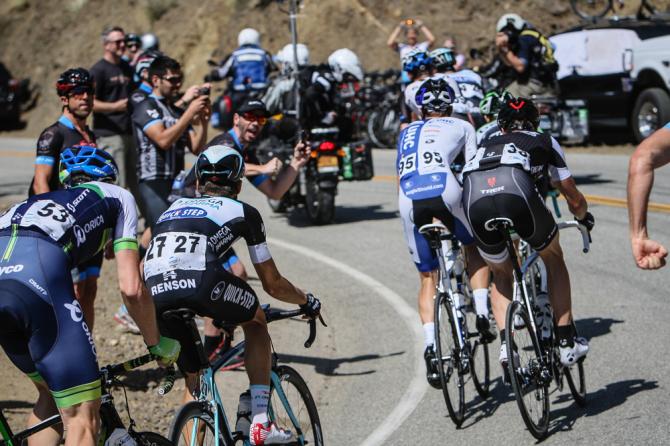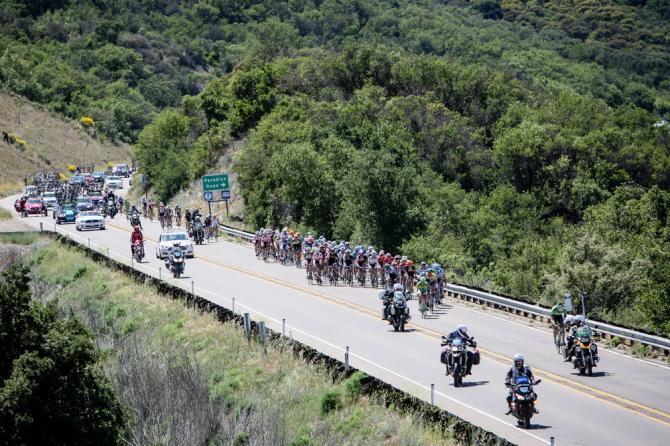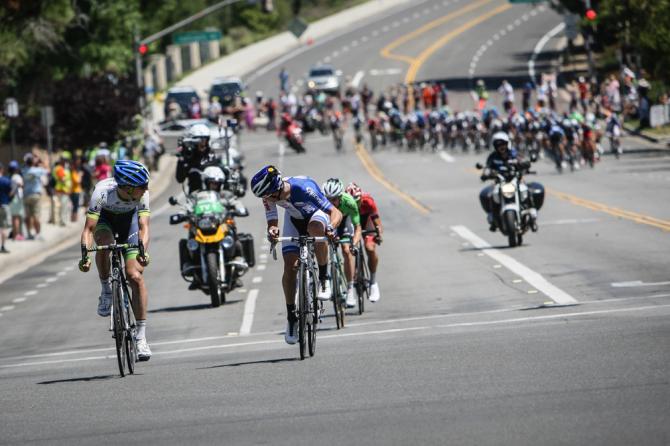Breakaways the order of the day at the Tour of California
Three of the eight stages won by the break



The Tour of California played out quite differently than most week-long professional stage races, with breakaways sticking all the way to the line on three consecutive days out of an eight-day race that featured seven road stages.
A breakaway of six riders found success on the stage 4 run down the California coast from Monterey to Cambria, holding its advantage all the way to the line and finishing more than a minute ahead of a surprised peloton.
Taylor Phinney (BMC Racing Team) shocked the bunch the following day with a 20km solo move into Santa Barbara. On the stage 6 route from Santa Clarita to the uphill finish on Mountain High, three riders survived from a daylong breakaway and grabbed all of the podium spots. It began to look like the peloton was the underdog in these battles, rather than the escapees.
Garmin-Sharp rider Tom Danielson, who finished third on Mountain High, credited a strong tailwind on almost every stage for some of the breakaway success, but he also said the quality of the field meant each move was packed with talented riders.
"It's not the same Tour of California as it was when it started in 2006 and you had two teams racing each other," Danielson said. "It's close to the WorldTour now. I mean you're looking down at your power meter and you see six watts per kilo and there's still 60-70 guys there. Before there would be five guys.
"So there's a much higher level," he said. "And, of course, wind direction. Like [the stage to Mountain High]; six strong guys get away and they're chasing in a 30 mile per hour tailwind. How are you going to bring them back? It's not possible."
But Mark Cavendish, the Omega Pharma-Quickstep sprinter whose team is one of the best in the world at dragging back breakaways, had quite a different opinion. Cavendish book-ended the race with wins on stage 1 and 8, but he missed at least two more chances when the breakaways stuck.
The latest race content, interviews, features, reviews and expert buying guides, direct to your inbox!
"I think it's the motorbikes," he said following his victory in the final bunch sprint in Thousand Oaks. "Like today, we were there chasing in the peloton, and we could see the motorbikes in front of the break pulling it along."
After the Thousand Oaks stage, a rider from Belkin, which was riding for sprinter Matthew Goss, approached the TV moto and told the driver they had been much too close in the final run to the line.
Cavendish said the assistance from the moto bikes raised the average speed of the race and put the chasers at a disadvantage.
"It's not that they're not pulling the peloton along, too," he said. "But when you make the average speed higher, then the difference between the speed of the peloton and the speed of the break can't be that much more. I mean if you're both going 60 kilometers an hour, you can't go much faster than that. That's my opinion."
But Cavendish also noted the strength of some of the riders in the breakaways this week, like Optum's Will Routely, the stage 4 winner who was a frequent escapee on his way to winning the mountains classification.
"[There were] some strong riders too, like this guy down here," Cavendish said at the post-race press conference, pointing to Routley at the end of the dais. "He was in the breakaway almost everyday, and climbing too."
Growing up in Missoula, Montana, Pat competed in his first bike race in 1985 at Flathead Lake. He studied English and journalism at the University of Oregon and has covered North American cycling extensively since 2009, as well as racing and teams in Europe and South America. Pat currently lives in the US outside of Portland, Oregon, with his imaginary dog Rusty.
